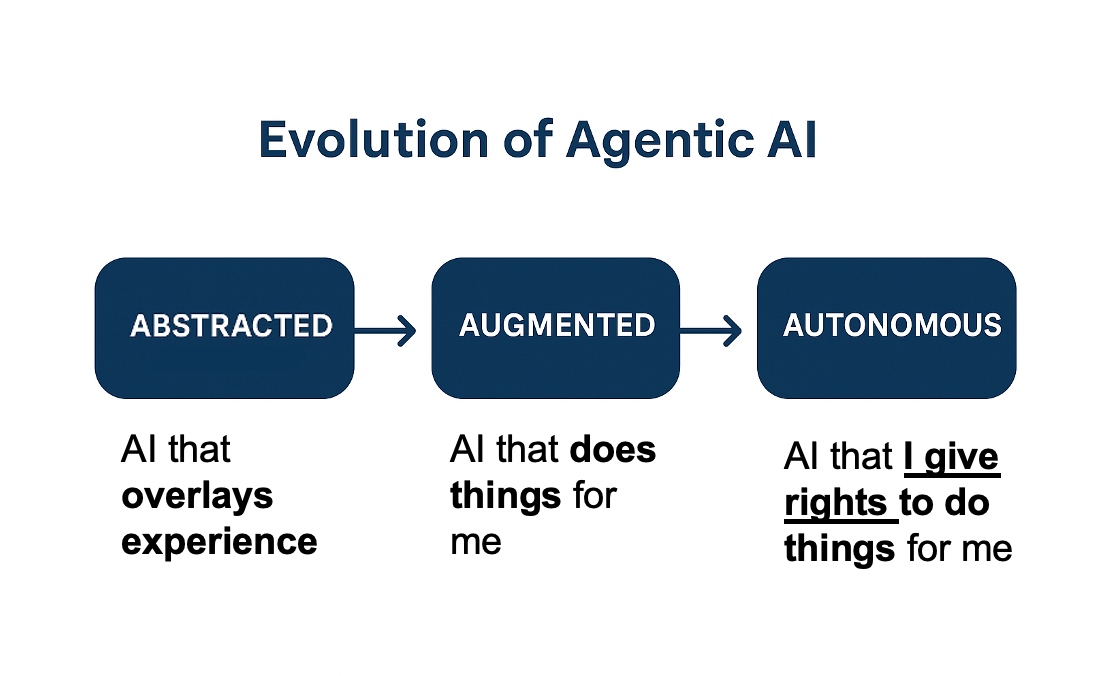Governments are shifting from chatbots and productivity tools to agentic AI that can act on behalf of staff and citizens. To use this moment wisely, agencies must build the infrastructure, governance, and accountability needed to keep pace and manage risks.



Since ChatGPT exploded in late 2022, I’ve spent the past few years working with public sector leaders as they explore artificial intelligence. Most early pilots have focused on productivity tools and chatbots, but these only scratch the surface of what’s coming.
At e.Republic, I co-launched the Center for Public Sector AI with my friend, Teri Takai. That work gave me a front-row seat to how fast this landscape is shifting. Unlike the Internet, which scaled gradually over years (giving agencies time to prepare), AI is advancing on an exponential curve, and the window to prepare the right foundation is closing fast.
Trends Driving the AI Moment in Government
Similar to my views on the App Store Moment in GovTech, several converging trends are impacting and accelerating this AI moment in the public sector, including:
These trends have put government at a unique inflection point; however, agencies need to understand what comes next to take full advantage of this moment.
From Tools to Agents
Much of today’s AI conversation in government is about the efficiency gains through things like task automation, self-service, etc. Although these elements are impactful, the bigger shift will come from the rise of agentic AI, which is where AI systems act autonomously on behalf of constituents or government staff.
I’m already seeing some of the early signs. I’m hearing of agencies receiving AI-generated FOIA requests and mass-submitted public comments. Soon, zoning proposals will attract thousands of AI-authored comments. Eligibility systems will see applicants using AI agents to navigate requirements faster than staff can process them. And more and more citizens (and employees) will trust agentic AI agents to do things for them, where their involvement becomes more abstracted.

And yet, most governments lack the infrastructure for this. There are no audit trails for machine-to-machine interactions, no policy engines enforcing rules in real time, no shared interfaces for humans and AI, and no way to handle the volume. Agencies also need help to build the infrastructure and partnership to move beyond the chatbots, into more transformative use cases.
The Choice Ahead
Without the right infrastructure, agencies face two options:
The better option is to build the foundation for the full evolution of AI now. Public sector agencies should treat AI not as a series of disconnected pilots, but as a permanent shift in the way work can get done that should be connected at an enterprise level. Governance, infrastructure, and accountability must be built into the core. The need for this foundation is exactly why I have decided to join Darwin AI as their Chief AI Officer & US General Manager, enabling me to focus more energy and attention on how agencies can operationalize AI responsibly.
Where We Go From Here
This moment demands more than technology. It requires educating leaders and staff, building the infrastructure for agentic AI, and designing for a future where AI isn’t just a tool but a catalyst in reimagining government services. The AI moment is already here. The question isn’t if government will adopt it, but how we ensure it strengthens trust and protects rights.
The time to act is now, and I hope you’ll join me as a partner, customer, or collaborator to move this critical conversation forward.